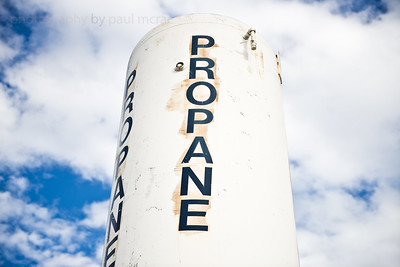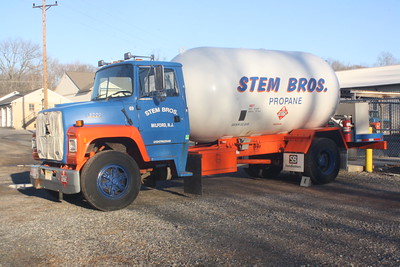
Propane is a hydrocarbon gas with the chemical formula C3H8. It consists of three carbon atoms (C) and eight hydrogen atoms (H). This simple molecular structure places propane in the alkane group, a family of hydrocarbons where carbon atoms are connected by single bonds, and each carbon atom forms four bonds in total, either with other carbons or with hydrogen atoms.
In its natural state, propane is a gas at room temperature and atmospheric pressure. It’s colorless and odorless, although an odorant is usually added for safety reasons to help detect leaks. Propane is commonly found in natural gas and petroleum deposits and is extracted during natural gas processing and petroleum refining. Its molecular structure makes it an efficient fuel source, as the carbon-hydrogen bonds store a significant amount of energy, which is released when the propane is burned.
Understanding the Molecular Structure
- Basic Structure:
- Chain of Carbons: In propane, the three carbon atoms are connected in a straight chain. This is a relatively simple structure compared to other hydrocarbons.
- Surrounded by Hydrogen: Each carbon atom is bonded to hydrogen atoms to fill its valence shell. The two end carbon atoms are each bonded to three hydrogen atoms, while the middle carbon is bonded to two hydrogen atoms.
- Visualizing the Molecule:
- Picture a straight line representing the carbon atoms, with each carbon atom branching out to hydrogen atoms. This compact structure is key to its properties as a fuel.
Significance of Carbon-Hydrogen Bonds
- Energy Content:
- Source of Energy: The bonds between carbon and hydrogen atoms in propane are high-energy bonds. When these bonds are broken during combustion, a significant amount of energy is released. This is what makes propane an efficient fuel source.
- Combustion Process: During combustion, propane reacts with oxygen, breaking these C-H bonds and forming carbon dioxide and water. This reaction releases heat, which is why propane is so useful for heating and cooking.
- Comparing to Other Fuels:
- Higher Hydrogen-to-Carbon Ratio: Propane has a higher ratio of hydrogen to carbon compared to many other hydrocarbons. This means it burns more cleanly, producing less carbon per unit of energy released.
- Efficiency and Clean Burning:
- Less Carbon Residue: Due to its molecular structure, burning propane produces fewer carbon deposits and pollutants compared to some other fossil fuels.
- Environmental Impact: While propane is a fossil fuel and does contribute to carbon emissions, its high energy content and cleaner-burning nature make it a preferred choice in scenarios where renewable energy sources are not feasible.
The molecular structure of propane, primarily its carbon-hydrogen bonds, is what gives it the high energy content, making it an efficient and relatively cleaner fuel option. Understanding this chemical composition allows you, as a consumer or user, to appreciate not just what propane does, but how it does it.
Read related article: Will We Ever Run Out of Propane? (Influencing Factors)
Where does propane come from?
Propane, a versatile and widely used fuel, is primarily sourced from two processes: natural gas processing and crude oil refining. Here’s a closer look at each source:
- Natural Gas Processing
- Separation from Natural Gas: Natural gas, extracted from underground reservoirs, is primarily methane but also contains other hydrocarbons, including propane. During processing, these hydrocarbons are separated.
- Processing Steps: The process typically involves cooling the natural gas and separating the liquids (natural gas liquids or NGLs) from the gas. Propane is then isolated and purified from these NGLs through a series of distillation steps.
- Crude Oil Refining
- Byproduct of Refining: When crude oil is refined to produce gasoline, diesel, and other petroleum products, propane is produced as a byproduct.
- Refining Process: Crude oil is heated in a refinery, and various components are separated based on their boiling points. Propane, due to its relatively low boiling point, is one of the first products to be separated out in this process.
Global Distribution of Propane
- Geographical Variation: The availability of propane is influenced by the regional distribution of natural gas and oil reserves. Countries with abundant natural gas reserves, like the United States, Russia, and parts of the Middle East, are major producers of propane.
- Import and Export: While some countries produce enough propane to meet their domestic needs and export the surplus, others import propane to satisfy their demand.
Environmental Considerations
- Fossil Fuel Source: Since propane is derived from fossil fuels, its production is linked to the extraction of natural gas and crude oil, which have environmental impacts.
- Sustainability Efforts: The industry is continuously working on improving the efficiency of propane production and reducing the environmental footprint of extraction and refining processes.
Propane comes from the processing of natural gas and the refining of crude oil. The distribution and availability of propane are closely tied to global natural gas and oil reserves and their respective processing infrastructures. Understanding these sources is essential for grasping the broader context of propane’s role in the global energy landscape.
Read related article: Is Propane a Chemical? Understanding the Nature & Properties
How is propane made?
Propane is not just a byproduct of natural gas processing and petroleum refining; its production involves some intricate and less-known processes. Understanding these processes can give you a deeper appreciation of what goes into making this versatile fuel. Let’s delve into the details.
Cracking of Heavier Hydrocarbons
- What is Cracking?
- Definition: Cracking is a process that breaks down larger, heavier hydrocarbon molecules into smaller, lighter ones, like propane.
- Types of Cracking: The process can be thermal (using heat), catalytic (using a catalyst), or steam cracking (using high-temperature steam).
- Cracking in Propane Production:
- From Heavy to Light: In the context of propane, cracking is crucial for transforming heavy oil fractions into lighter gases. This process increases the yield of lighter, more valuable hydrocarbons like propane from heavier crude oil.
Advanced Methods in Refining Natural Gas
- Separation Techniques:
- Fractional Distillation: Propane is separated from other components of natural gas through fractional distillation, where different components are separated based on their boiling points.
- Absorption and Adsorption: These processes involve using a material to absorb or adsorb specific components from the natural gas, effectively isolating propane.
- Refinement Process:
- Purification: Following separation, propane is further purified to remove impurities and meet commercial quality standards.
Role of Catalytic Reactions in Producing Propane
- Catalysis in Cracking:
- Catalytic Cracking: Here, catalysts are used to facilitate the breaking down of larger hydrocarbon molecules. Catalysts speed up the reaction and make it more efficient.
- Types of Catalysts: Common catalysts in cracking include zeolites, silica-alumina, and other acidic materials.
- Impact of Catalysis:
- Efficiency: Catalytic reactions enable more control over the cracking process, leading to higher yields of desired products like propane.
- Economic and Environmental Benefits: More efficient reactions mean less energy consumption and lower emissions, making the process more sustainable and cost-effective.
- Innovation in Catalysis:
- Research and Development: Ongoing research in catalyst technology aims to further improve efficiency and selectivity in propane production, potentially leading to even cleaner and more efficient processes.
The production of propane involves complex and sophisticated processes that go far beyond simple separation from natural gas. The cracking of heavier hydrocarbons and the advanced techniques used in refining natural gas, especially the role of catalytic reactions, are pivotal in efficiently producing propane. Understanding these processes not only enlightens you about the origins of the propane you use but also highlights the technological ingenuity behind this common fuel.
Read related article: Are Gas and Propane the Same Thing? (Difference & Similarity)
What are the benefits of propane?
| Benefit | Details |
|---|---|
| High Energy Density | Propane offers a high energy output per unit, resulting in more heat or power with less fuel compared to many alternatives. |
| Clean Combustion | Emits fewer greenhouse gases, particulate matter, and sulfur dioxide compared to other fossil fuels, making it a cleaner burning option. |
| Versatility in Applications | Utilized in diverse contexts, from residential heating and cooking to fueling vehicles and powering industrial equipment. |
| Portability and Storage | Easily transported and stored in liquid form, making it suitable for use in remote or off-grid areas where other fuel infrastructures may be unavailable. |
| Energy Independence | Propane’s domestic production can reduce reliance on imported fuels, contributing to national energy independence in many regions. |
| Cost-Effectiveness | Generally more cost-effective compared to electricity for heating and cooking, particularly in regions with high electricity costs. |
| Reduced Carbon Footprint | Produces fewer overall greenhouse gas emissions compared to other fossil fuels, offering a more sustainable energy option for reducing environmental impact. |
| Safety Standards | Subject to strict safety regulations, with robust tank construction and safety mechanisms to prevent leaks and ensure safe usage. |
Industrial Applications of Propane
- Manufacturing Processes
- Heating: Propane is used for process heating in various manufacturing industries.
- Metalworking: In the metalworking industry, propane is used for soldering, brazing, cutting, and heat treating metals.
- Agriculture
- Crop Drying: Propane is commonly used to dry crops like corn, soybeans, and rice.
- Pest Control: It’s used in flame weeding and other pest control methods.
- Construction
- Building Heating: Propane heaters are used on construction sites to dry paint, plaster, and other materials.
- Power Tools: It powers various construction tools and machinery.
- Food Processing
- Cooking and Baking: Propane is used in commercial cooking equipment for baking and cooking.
- Refrigeration: Propane-based refrigeration systems are used for food storage and processing.
- Power Generation
- Backup Generators: Propane is used in backup generators for uninterrupted power supply in industries.
Residential Applications of Propane
- Heating and Cooling
- Home Heating: Propane furnaces provide heating to homes, especially in areas without access to natural gas pipelines.
- Water Heating: Propane water heaters are efficient and can heat water faster than electric models.
- Cooking
- Stoves and Ovens: Propane is popular for residential cooking due to its precise temperature control and efficiency.
- Outdoor Living
- Grilling: Propane is widely used in outdoor grills for barbecuing.
- Patio Heaters and Fire Pits: Used to power outdoor heating elements for comfort and ambiance.
- Laundry Appliances
- Dryers: Propane dryers are known for their efficiency and quick drying times.
- Emergency Power
- Generators: Propane-powered generators are used for emergency power backup in residential settings.
- Pool and Spa Heating
- Propane heaters are effective for quickly heating outdoor pools and spas.
In both industrial and residential settings, propane stands out for its efficiency, reliability, and versatility. In industries, it supports various processes from manufacturing to agriculture, while in homes, it enhances comfort and convenience through heating, cooking, and emergency power. Propane’s widespread use in different domains underscores its importance as a flexible and efficient energy source.
Byproducts and Co-Products in Propane Manufacturing
Propane manufacturing, particularly from petroleum refining and natural gas processing, yields a variety of byproducts and co-products. Understanding these substances and their subsequent uses not only highlights the efficiency of the propane industry but also sheds light on the interconnectedness of different hydrocarbon markets.
Hydrocarbons Produced Alongside Propane
- Ethane:
- Use in the Petrochemical Industry: Ethane is primarily used as a feedstock for the production of ethylene, a key building block for plastics, resins, and various synthetic products.
- Butane:
- Fuel and Industrial Applications: Butane, similar to propane, is used as a fuel. It also finds applications in the production of butylene, used in synthetic rubber manufacturing.
- Blending with Gasoline: Butane is often blended with gasoline to improve its volatility, especially in winter months.
- Isobutane:
- Refrigerant Role: Isobutane is used as a refrigerant and a propellant in aerosol sprays, replacing more harmful chlorofluorocarbons (CFCs).
- Alkylation in Refineries: It’s used in alkylation processes in refineries to produce high-octane components for gasoline.
- Natural Gasoline:
- Enhancing Gasoline Stocks: This mixture of hydrocarbons is used to enhance the stock of commercial gasoline.
- Methane:
- Primary Component of Natural Gas: Methane is the main component of natural gas and is used extensively for heating and electricity generation.
Utilization of Byproducts
- Chemical Feedstock:
- Many byproducts of propane manufacturing are valuable feedstocks in the chemical industry, used for producing a wide range of chemicals and synthetic materials.
- Fuel Applications:
- Several co-products serve as fuels themselves, either in their pure form or as additives to improve fuel properties.
- Environmental Replacements:
- Substances like isobutane are increasingly used as environmentally friendlier alternatives to more harmful chemicals, like CFCs in refrigerants.
- Energy Sector:
- Byproducts like methane play a significant role in the energy sector, being primary fuels for heating and power generation.
- Industrial Processes:
- Some byproducts are crucial in specific industrial processes, such as in the creation of synthetic rubber or as solvents.
Processing of Byproducts
- Separation and Purification:
- These byproducts are separated and purified through processes like fractional distillation and absorption, ensuring they meet the required standards for their intended use.
- Specialized Handling:
- Certain byproducts require specialized handling and storage due to their properties, like higher volatility or reactivity.
The byproducts and co-products of propane manufacturing are not waste materials but valuable resources that find extensive use in various industries. Their utilization demonstrates the efficiency and sustainability of the propane industry, contributing to a circular economy where waste is minimized, and resources are fully utilized.
Read related article: What are Some Disadvantages of Propane? (Exploring the Drawbacks)
Conclusion
In exploring the composition and production of propane, we gain a deeper appreciation for this commonly used fuel. Propane, a simple hydrocarbon with the formula C3H8, is more than just a fuel for grilling and heating. Its molecular structure provides high energy content and efficiency, making it a clean and versatile energy source.
The production of propane, through the advanced processing of natural gas and petroleum refining, showcases human ingenuity and technological progress. It involves sophisticated methods like the cracking of heavier hydrocarbons and the use of catalytic reactions, highlighting the complexity behind its seemingly simple presence in our daily lives.
Additionally, the journey of propane production is intertwined with the creation of other valuable hydrocarbons, emphasizing the efficiency and resourcefulness of the industry. These byproducts find diverse applications, further underscoring the sustainability of propane production.
Understanding what propane is made of and how it is produced deepens our appreciation for this efficient, clean-burning fuel. It’s a story that combines science, technology, and sustainability, reflecting our continuous effort to harness natural resources responsibly and innovatively for our energy needs.

Mike is an experienced propane technician with over 15 years of professional experience in the field. He has dedicated his career to helping customers with their propane needs, from installation to maintenance and repair. Together with Jeremy, he co-founded this website to provide useful information and guidance to customers seeking reliable propane services.



